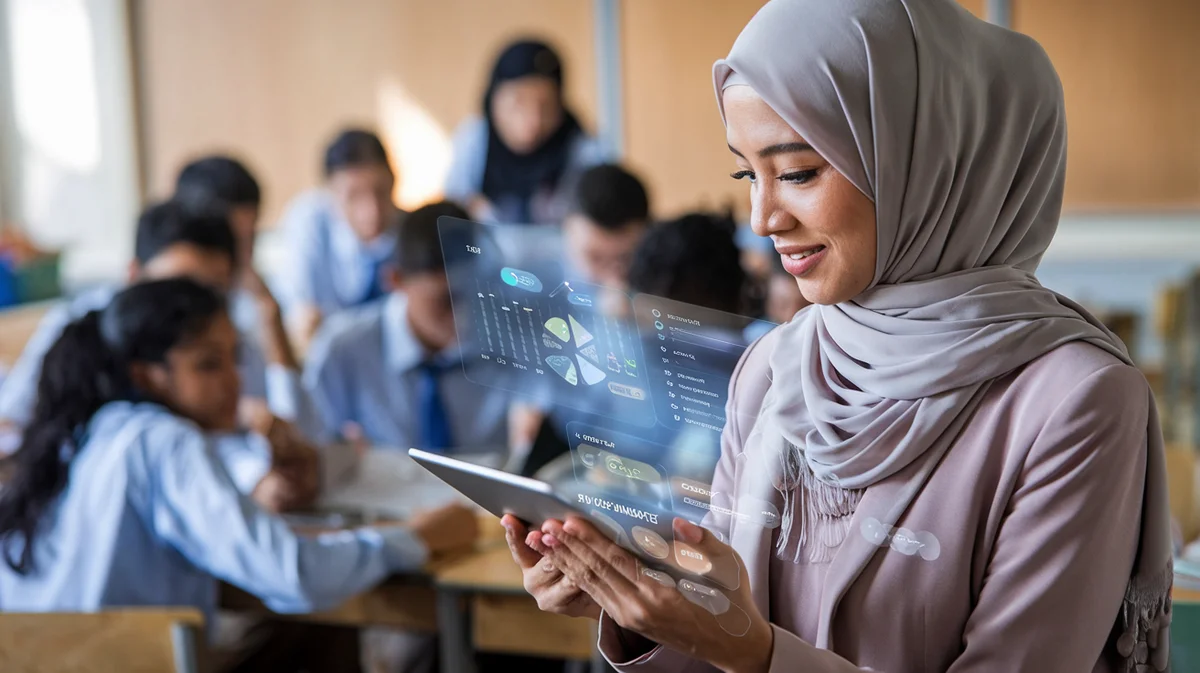Integrating AI with STEM Labs: Empowering Future-Ready Education


The integration of artificial intelligence (AI) with STEM (Science, Technology, Engineering, and Mathematics) labs is rapidly reshaping educational systems worldwide. At UNOWA, we are committed to empowering institutions, educators, and students by delivering innovative, inclusive, and locally adaptable educational solutions. This article explores the transformative impact of AI and STEM education, highlights regional trends across the EU, MENA, and CIS, and shares proven strategies for large-scale, future-ready educational reform.
The Transformative Power of AI and STEM Education
AI is revolutionizing how students learn, experiment, and solve real-world problems in STEM labs. By automating data analysis, personalizing learning experiences, and enabling hands-on experimentation with cutting-edge tools, AI is making STEM education more engaging, accessible, and effective.
Key Facts and Regional Insights
- EU: Despite robust policy efforts, challenges persist in STEM education, including gender disparities and the urgent need for teacher training and curriculum modernization. The European Commission is prioritizing digital skills and AI literacy to address these gaps (European Commission).
- MENA: Countries like Saudi Arabia and the UAE are investing heavily in digital infrastructure and AI literacy. Saudi Arabia, for instance, aims to increase AI literacy in 40% of its workforce and has launched initiatives to integrate AI into 200 schools, partnering with EdTech startups for large-scale impact (Arab News).
- CIS: Governments are focusing on digital transformation and AI integration, often in collaboration with international partners. Policy frameworks are emerging, influenced by EU standards and global best practices.
Inclusive and Locally Adaptable Solutions
At UNOWA, we believe every child deserves access to quality education, regardless of their abilities or background. Integrating AI with STEM labs must be inclusive by design, ensuring accessibility for students with disabilities and those from marginalized communities.
- Inclusive Education: AI-powered tools can adapt content to different learning needs, support multiple languages, and provide assistive technologies for students with special educational needs (SEN).
- Local Adaptation: Solutions must reflect local languages, cultures, and educational standards to ensure relevance and sustainability. Our Ulabs platform, for example, is tailored to national curricula and adaptable to diverse classroom environments (UNOWA).
Overcoming Challenges: Equity, Talent, and Teacher Preparedness
Equity and Access
Disadvantaged groups risk being left behind without targeted policies and resources. Ensuring equitable access to AI-powered STEM labs is critical for inclusive education and social mobility.
Talent Development
A significant barrier, especially in the MENA region, is the shortage of local AI talent. Governments and educational institutions are focusing on cultivating homegrown expertise to support tech-driven economies.
"A common weakness across the [MENA] region is the lack of talent working on AI solutions. Therefore, a key policy focus is to cultivate local AI talent for an increasingly tech-dependent economy." — Langendorf & Farley, 2021
Teacher Training and Support
Many educators feel unprepared to use AI tools effectively. Continuous professional development and robust training programs are essential for successful integration.
"STEM teachers recognize the potential of generative AI to enhance learning but express concerns about training, ethical use, and equitable access." — 2025 study
Proven Strategies for Large-Scale Impact
1. Invest in Teacher Training
Ongoing professional development empowers teachers to leverage AI tools confidently and ethically. Training should address both technical skills and pedagogical approaches.
2. Foster Public-Private Partnerships
Collaborations with EdTech companies and international organizations accelerate the adoption of AI in education. These partnerships bring in expertise, resources, and innovative solutions.
3. Promote Gender Equity
Targeted initiatives are needed to close gender gaps in STEM participation, especially in tertiary education. Mentorship programs, scholarships, and inclusive curricula can drive meaningful change.
4. Align with Policy and Regulatory Frameworks
- EU: The European Commission emphasizes coordinated policy efforts to modernize STEM education, focusing on digital skills and AI literacy (European Schoolnet).
- MENA: Leading countries are developing regulatory strategies for digital infrastructure, teacher training, and AI curriculum integration, but clearer guidelines on ethical AI use and data privacy are needed.
- CIS: Policy frameworks are emerging, often influenced by EU and international standards, with a focus on digital transformation and workforce readiness.
Real-World Examples and Global Reform Projects
- Saudi Arabia: Integrated AI into 200 schools through EdTech partnerships, aiming for large-scale, sustainable impact.
- UAE: Plans to introduce generative AI in classrooms to improve educational outcomes, reflecting a broader regional trend toward tech-enabled learning.
- EU: Ongoing reforms focus on updating STEM curricula, increasing teacher support, and addressing gender disparities.
For more on global education reform, see UNESCO’s Education Transformation.
The Future of AI and STEM Education
AI and STEM education are at the heart of preparing students for the jobs of tomorrow. By fostering critical thinking, creativity, and digital literacy, we empower the next generation to thrive in an ever-evolving world.
At UNOWA, we are at the forefront of developing cutting-edge educational solutions that are inclusive, adaptable, and ready for large-scale impact. Our mission is to transform learning experiences and create a better world through modern education tools.
Frequently Asked Questions
How does AI enhance STEM labs?
AI automates data analysis, personalizes learning, and enables hands-on experimentation, making STEM labs more interactive and effective. AI-powered simulations and virtual labs also allow students to explore complex concepts safely and at their own pace.
What are the main challenges in integrating AI with STEM education?
Key challenges include teacher preparedness, equitable access, local talent shortages, and the need for clear regulatory guidelines. Addressing these requires investment in training, infrastructure, and inclusive policies.
How can AI-powered STEM labs support inclusive education?
AI tools can adapt content for different learning needs, provide assistive technologies for students with disabilities, and support multiple languages, ensuring all students can participate fully.
What role do public-private partnerships play in AI and STEM education?
Partnerships with EdTech companies and international organizations bring expertise, innovation, and resources, accelerating the adoption and scaling of AI-powered STEM solutions.
How does UNOWA support the integration of AI in education?
We design and deliver complete educational systems, including STEM innovation labs, curriculum-aligned content, teacher training, and analytics. Our solutions are adaptable to national standards and focused on inclusivity and large-scale impact. Learn more at UNOWA.
For further reading on AI and STEM education, visit:
- European Commission: Digital Education Action Plan
- Arab News: Saudi Arabia’s AI Initiatives
- UNESCO: Education Transformation
- European Schoolnet
Let’s work together to transform learning experiences for the better. Empower your institution with future-ready, inclusive, and innovative education solutions from UNOWA.








